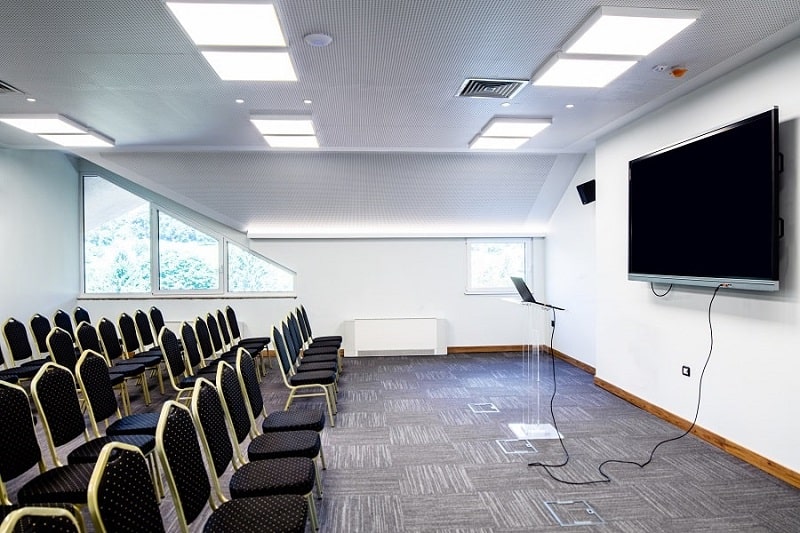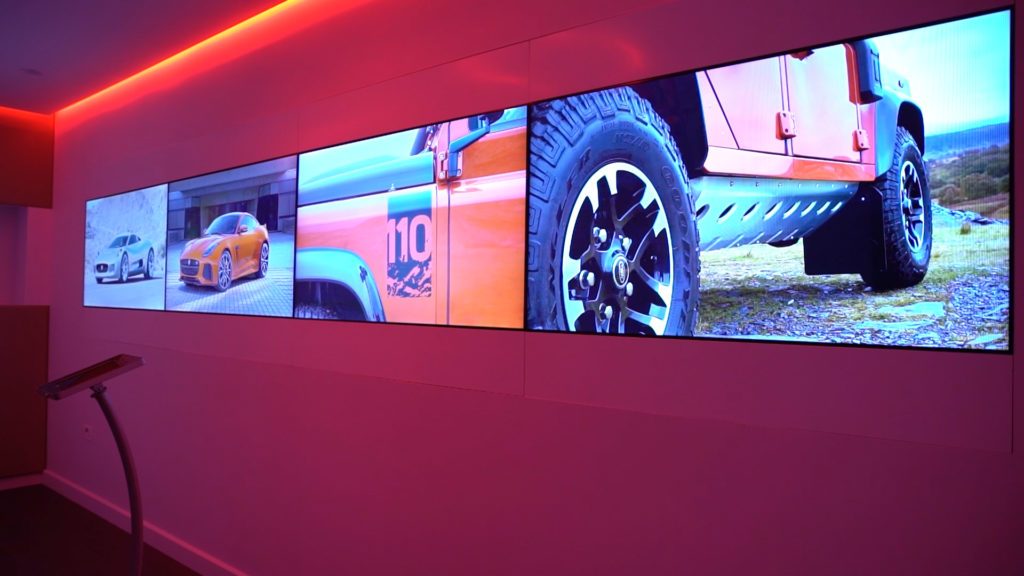Creating Dynamic Learning Atmospheres With Advanced Sound Visual Systems
In the swiftly progressing landscape of education and learning, the combination of advanced audio-visual systems stands as a critical advancement, changing standard class right into vibrant understanding settings. As we explore the possibility of these systems, one need to think about how they reshape pedagogical methods and effect discovering outcomes.
Comprehending Advanced AV Equipments
In today's rapidly developing academic landscape, advanced audiovisual (AV) systems have become indispensable to producing appealing and reliable understanding environments. These systems incorporate a wide selection of technologies, including interactive display screens, high-def projectors, and advanced audio systems, every one of which add to a more immersive educational experience. By leveraging these technologies, educators can offer details in varied and dynamic styles, dealing with different finding out designs and requirements.
Comprehending the parts and abilities of sophisticated AV systems is crucial for educators and administrators intending to enhance their instructional settings. Interactive screens, as an example, enable real-time partnership and comments, enabling trainees to engage more deeply with the content. High-definition projectors make sure that visual products exist with quality, improving comprehension and retention. Advanced audio systems provide clear audio, which is crucial for keeping emphasis and making certain that all pupils can hear and comprehend the material being presented.
Including advanced AV systems needs not only an understanding of the technology itself however likewise tactical planning to align these devices with educational purposes. By attentively incorporating these systems, institutions can promote an environment that supports innovative teaching approaches and enhances the general academic experience for both pupils and educators.
Enhancing Student Engagement
Everybody recognizes that student interaction is a vital element of successful learning outcomes. AV Installation. These systems can transform conventional classrooms right into dynamic settings where trainees are motivated to find out.
High-quality audio and visual aspects help capture trainees' focus and boost their understanding of complex topics. For example, using huge display screens with crisp images and clear sound can make lessons extra exciting and understandable. Additionally, AV systems promote varied teaching methods, such as collaborative tasks and multimedia presentations, which can cater to various finding out designs and keep students interested.
In addition, the incorporation of AV systems permits real-time comments and communication in between trainers and pupils. This immediacy can motivate energetic involvement, as students really feel much more linked to the lesson and confident in revealing their thoughts. Therefore, by incorporating innovative AV technologies, schools can create a stimulating atmosphere that not just enhances involvement however also supports much better scholastic efficiency and student complete satisfaction.
Integrating Interactive Technologies
Although the combination of interactive technologies in instructional setups marks a significant change from traditional teaching methods, its influence on trainee knowing and involvement is profound. Interactive modern technologies, such as smart boards, electronic tablet computers, and virtual reality applications, have actually redefined the classroom, changing it right into a dynamic area where pupils proactively join their understanding trip. These technologies foster collaboration, creativity, and crucial thinking, as pupils are encouraged to interact with electronic material, do simulations, and take part in analytic tasks.
The usage of interactive technologies facilitates real-time comments and analysis, enabling educators to tailor direction to meet private requirements. This immediacy in feedback enhances the finding out process, enabling trainees to understand principles better and promptly address false impressions. Additionally, such content modern technologies advertise inclusivity by offering varied learners with multiple methods of engaging and accessing with web content.
Moreover, these devices link the gap in between academic expertise and practical application, preparing trainees for a technology-driven world. By producing interactive and immersive learning experiences, educators are much better equipped to capture trainees' interest and sustain their passion. As the instructional landscape remains to develop, the critical combination of interactive innovations continues to be pivotal in promoting a reliable and engaging understanding setting.
Adjusting to Diverse Learning Styles
Tailoring instructional strategies to suit diverse learning designs is crucial in promoting a effective and inclusive class atmosphere. Advanced audio visual systems give versatile devices that can deal with the diverse preferences of students. For visual students, devices such as high-resolution projectors and interactive whiteboards use rich aesthetic material that improves understanding and retention. Auditory learners benefit from top notch audio systems that guarantee clarity throughout talks and enable the integration of audio materials like podcasts and recorded presentations.
Kinesthetic learners grow in atmospheres that permit hands-on communication. Technologies such as virtual fact (VR) and augmented truth (AR) supply immersive experiences that involve these students by enabling them to control digital things or discover digital environments. Adaptive understanding software program can tailor material distribution to specific learning choices, facilitating customized education paths.
Implementing Collaborative Devices
In today's interconnected academic landscape, the assimilation of collective devices plays a crucial role in boosting trainee interaction and helping with synergy (AV Installation). These devices are vital in producing vibrant discovering settings that cultivate communication, important reasoning, and problem-solving abilities among trainees. By leveraging advanced audio-visual systems, instructors can implement platforms that sustain real-time communication, file click here for more sharing, and joint project development, hence motivating a more active participation from students

Incorporating joint devices within the classroom not only straightens with modern instructional criteria yet additionally prepares trainees for the modern workforce where team effort and technological effectiveness are highly valued (AV Installation). As institutions strive to design settings that are both cutting-edge and inclusive, the tactical implementation of these tools becomes increasingly essential, ensuring pupils are furnished with the skills required for future success

Conclusion
High-def projectors, interactive displays, and advanced audio systems create immersive environments that fit varied knowing designs and facilitate clear communication. Joint tools allow smooth student collaboration, preparing students for future challenges in a technology-driven world, therefore improving both comprehension and retention of understanding.
Every person acknowledges that pupil engagement is a critical component of successful understanding outcomes.Although the integration of interactive innovations in academic setups notes a significant shift from conventional mentor approaches, its influence on student learning and interaction is extensive. Interactive modern technologies, such as wise boards, electronic tablet computers, and digital fact applications, have actually redefined the visit the site class, changing it right into a dynamic space where trainees proactively get involved in their understanding trip. By developing immersive and interactive knowing experiences, educators are better geared up to capture trainees' focus and receive their passion. These devices are crucial in developing vibrant understanding settings that promote interaction, crucial thinking, and problem-solving abilities amongst trainees.